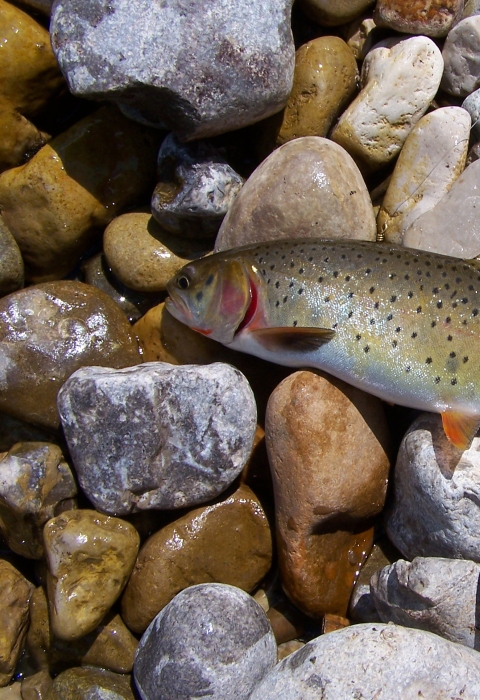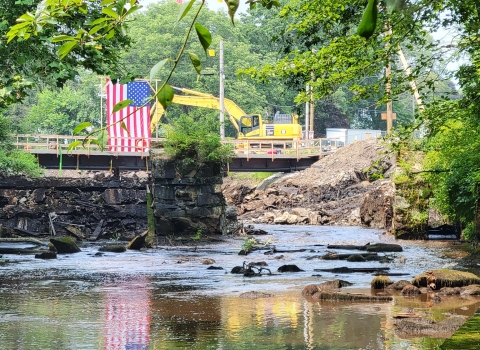It wasn’t looking good for native cutthroat trout in Henrys Lake by the early 1980s. By 1981, the lake had seen 10 consecutive years of dramatically declining catch rates and the virtual elimination of any native cutthroat trout reproduction in the lake, which is near Island Park, Idaho.
That’s when the people stepped up to form the Henrys Lake Foundation. The Foundation started as a grassroots effort to establish catch rate goals, increase natural cutthroat reproduction, enhance hatchery production, and improve water quality.
More than 31 years later, the Henrys Lake Foundation has leveraged direct funding of $167,000,obtaining additional external match funding to complete projects with an aggregate cost exceeding $3 million. The money continues to fund conservation projects in line with its native trout restoration goals in Henrys Lake.
The U.S. Fish and Wildlife Service’s Partners for Fish and Wildlife Program and biologist Cary Myler have played a big part in its success.
Thanks to the Foundation, more than 14 miles of streams and lakefront have been fenced, more than 10,000 willow stalks have been planted as revegetation, and several off-site watering holes have been installed for cattle. In addition, 21 irrigation diversion fish screens have been installed, which prevented untold numbers of creek-spawned fry being lost in bordering fields.
The Henrys Lake Foundation also spearheaded the replacement of eight culverts to accommodate the upstream passage of spawning cutthroat, including the major bridge replacement on Highway 87 at the Targhee and Howard Creeks in 2006.
As a result of this collaborative effort between the Henrys Lake Foundation, Idaho Department of Fish and Game, the Service’s Partners for Fish and Wildlife program, and numerous other state, federal, and non-profit agencies, it is now estimated that roughly 40 percent of the cutthroat trout in Henrys Lake are naturally reproduced. In addition, catch rates have tripled from the .25 fish per hour realized throughout the 1970s to the current .70 fish per hour today.
For his part in the successful conservation partnership that is Henrys Lake Foundation, the Idaho conservation organization recognized Myler with an award in July at the Meadow Vue Ranch. In particular, Myler was singled out for his efforts as a Partners for Fish and Wildlife biologist to enhance habitat for Yellowstone cutthroat trout (Oncorhynchus clarkii bouvieri).
The Henrys Lake Foundation presented Myler with the Louis Trager Memorial Award last month. The award is presented, when warranted, “in memory of Louis Trager whose life and deeds of stewardship exemplified a commitment of time and service in selfless dedication to the preservation and enhancement of the natural habitat of the Henrys Lake Watershed,” the plaque reads.
“Cary’s work in helping us secure government grant monies that we leverage with our non-profit contributions has been instrumental in helping us fund our highest priority fishery habitat improvement projects over the years,” said Henrys Lake Foundation president Phil Barker before presenting Myler with the award.
A conservation partner with Henrys Lake Foundation since 2008, the organization deemed Myler instrumental to its ongoing successes. “Our work would not have been possible without the commitment that Cary has shown in helping us improve and protect the fishery of Henrys Lake, one of the most important sfisheries in the western United States,” Barker said.
A career biologist, Myler has worked for eight years as the Partners for Fish and Wildlife biologist in the Eastern Idaho Field Office on various conservation projects. The award did not surprise his supervisor, Kathleen Hendricks. “Cary embodies the concept of partnering in the Gem State. His work with the Henry’s Lake Foundation is a shining example of his success in leveraging partnerships to deliver on-the-ground conservation,” she said.


